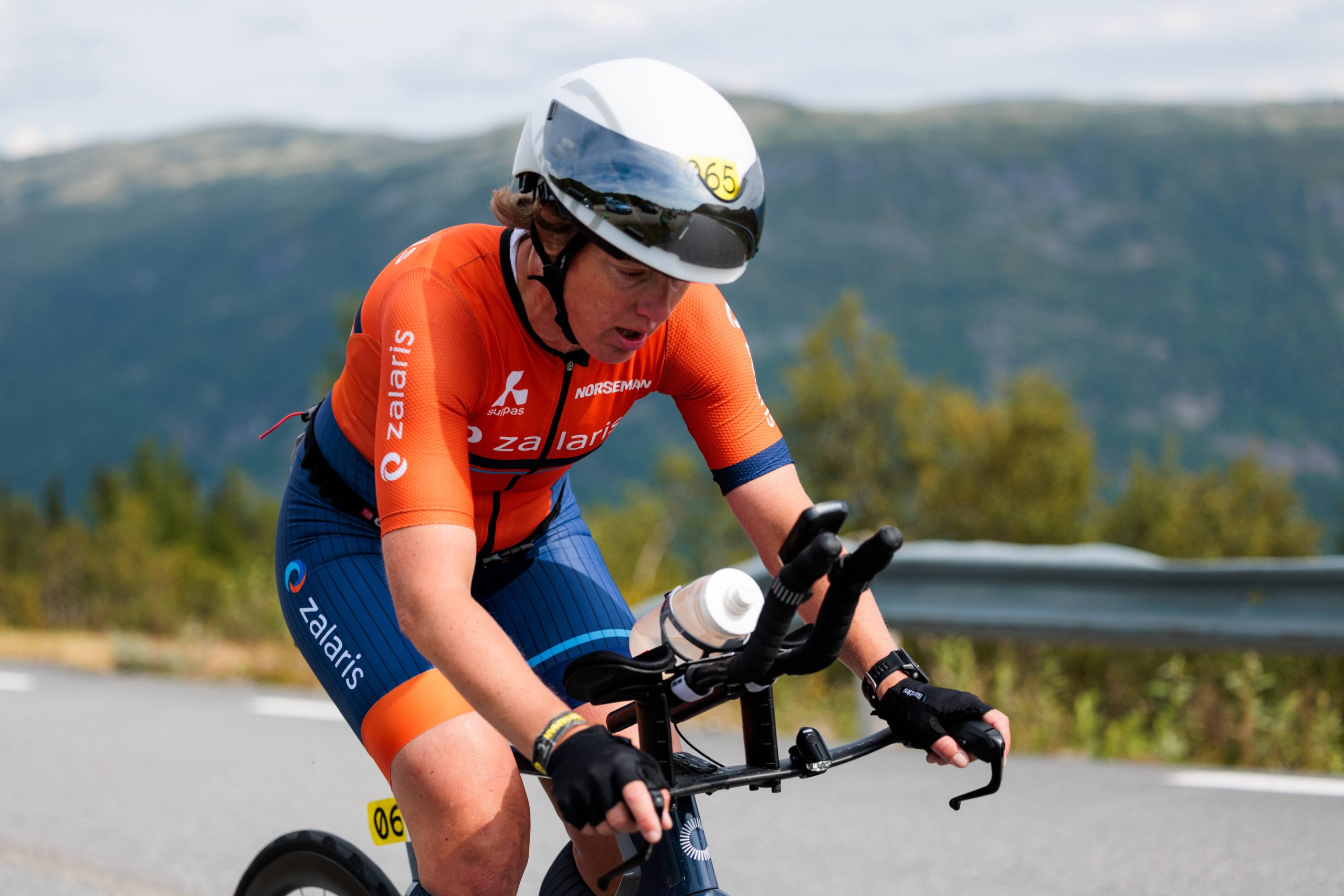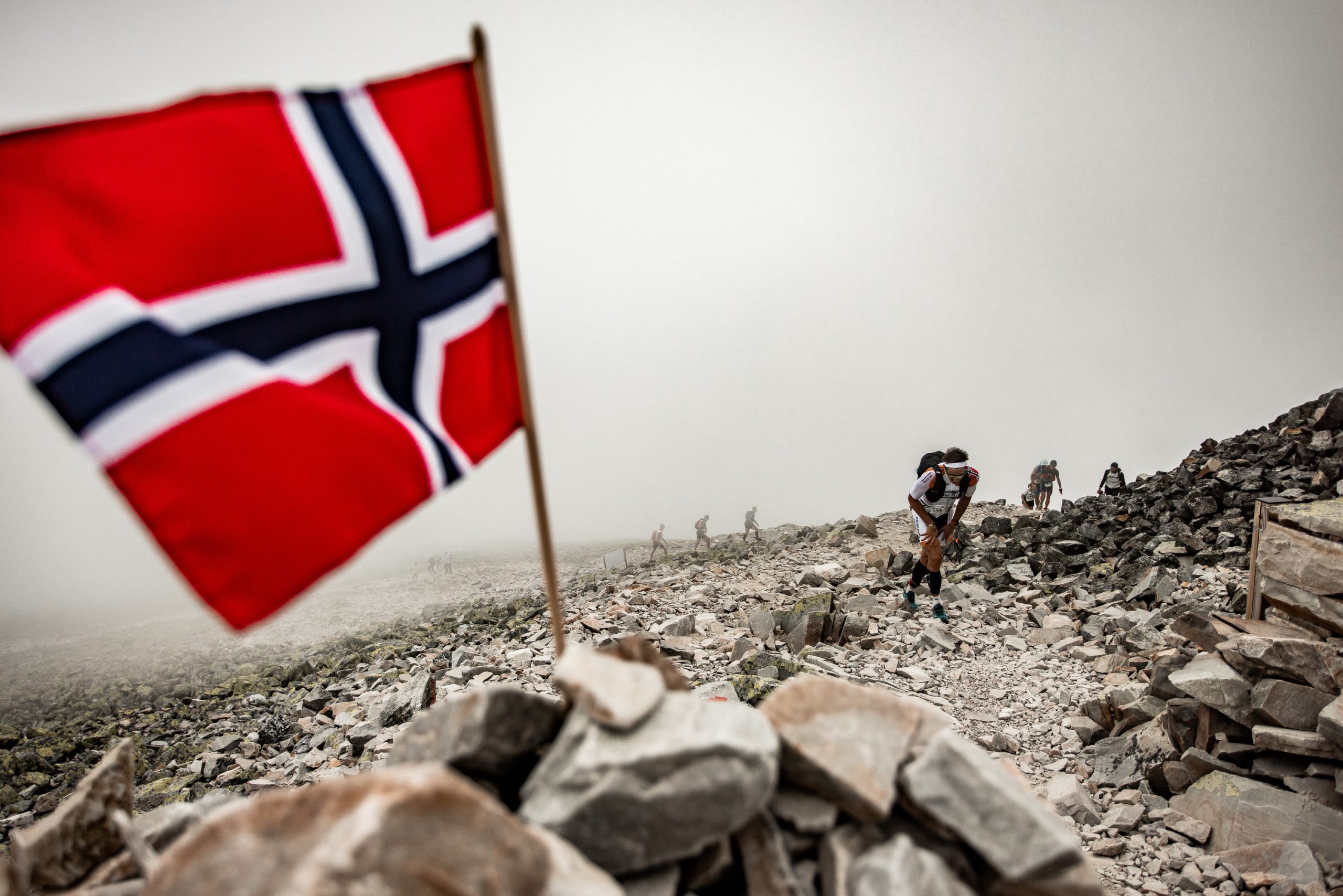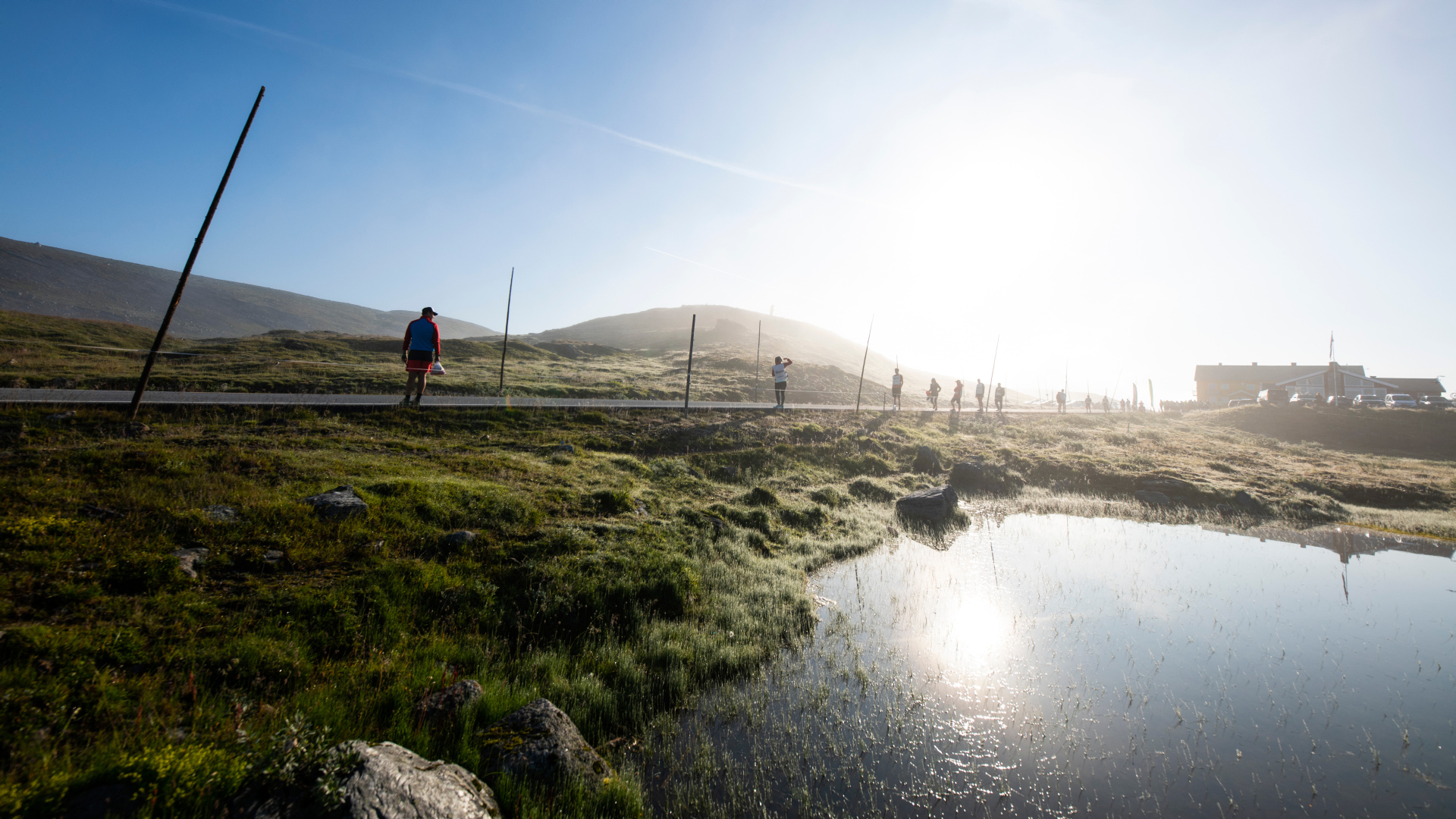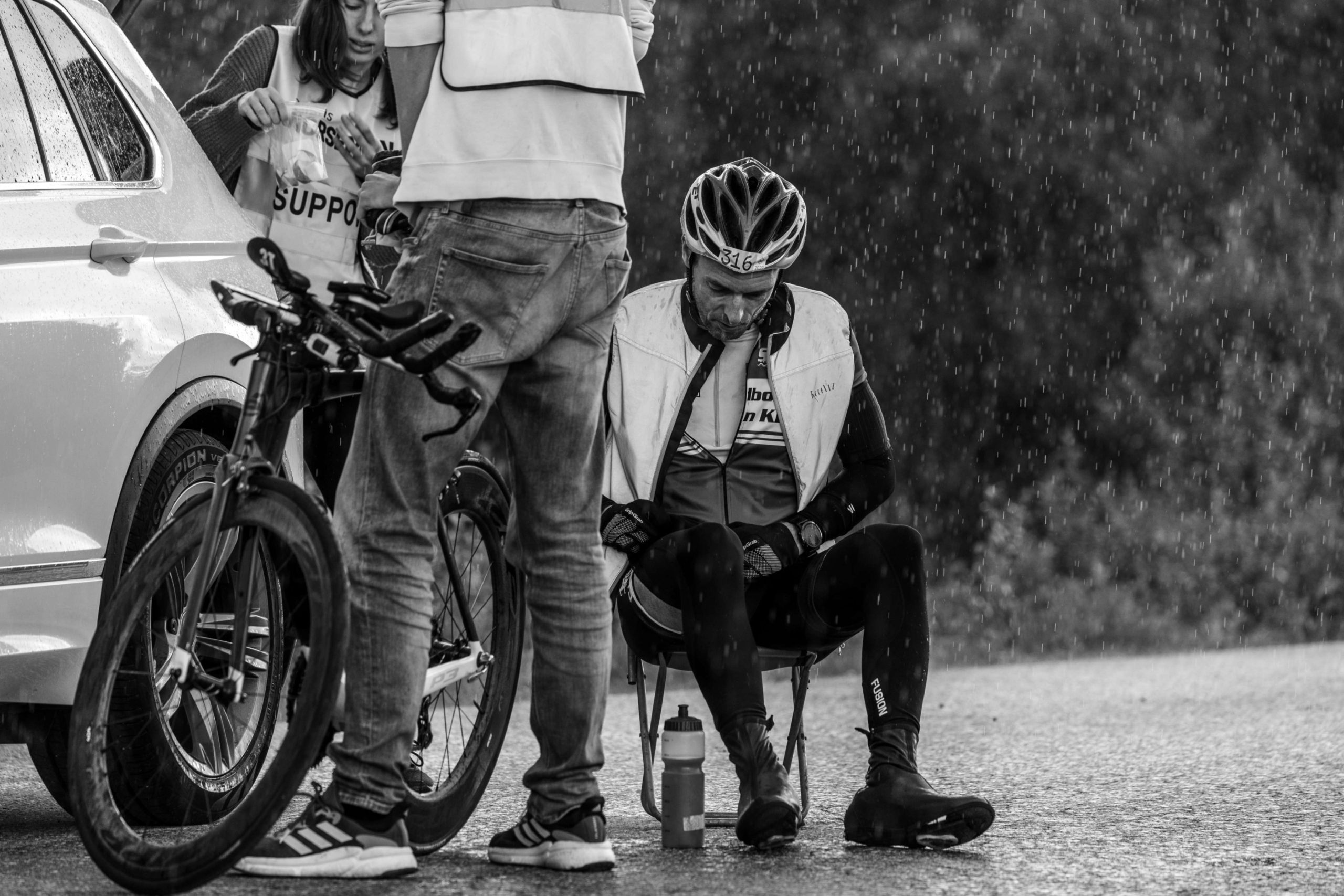On Monday we did the draw again, delighting some but disappointing the vast majority as a random name-picker selected those whose lives will be changed forever on August 1, 2020. The days and weeks leading up to the draw have been spent organising the move from the studio and office building that I previously shared with Spocks Family (and from which we broadcast the last two draws live online) to a new premises.
In the packing and unpacking, a lot of memories came floating up to the surface once more – accreditations from events I’ve covered, a USB stick shaped like Usain Bolt in his famous victory pose, and paper printouts of articles I wrote almost 20 years ago.
Among the artefacts of my career in sports journalism was a branded hat given to me by Dag Oliver, the man running the day to day operations behind the Matrix that is the Norseman race, and its place among all these World Cup and Olympic mementoes got me thinking.
I got involved in sport and sports journalism because I believed, and still believe, in the purity of competition and athletic endeavour. I care not for winning or losing; I care only for the thrill of the fight, the grind of the race, the grit of the game.
Money has never and will never motivate me – selfish as it may sound, I want the athletes to give me the best of themselves, their performances, their stories, their heroism. What I want when I travel the world is for my jaw to hit the floor having witnessed something that has never been seen or done or achieved before.
The Norseman does all these things, each and every year.
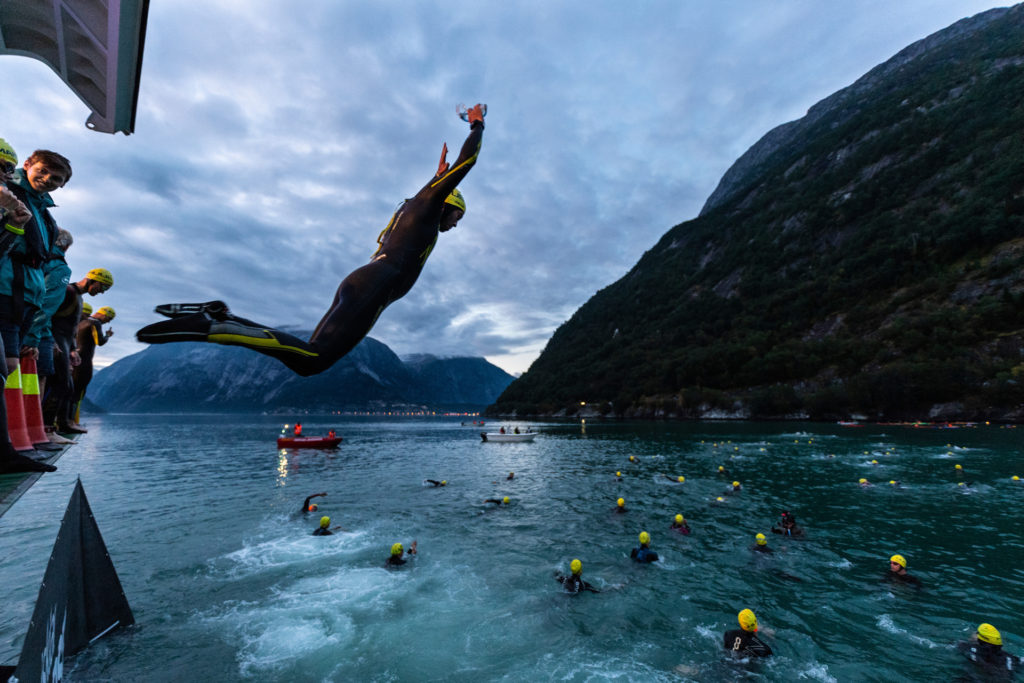
This year, I got to be on the ferry as the competitors dropped into the cold, dark waters of Eidfjord, and if I had not understood the appeal of this epic race before, I sure as hell understood it now. The courage it takes to go from having your name pulled out of the hat to dropping those few meters feet-first into the darkness and the longest day of your life is awesome. I have never done it and I never will, but I have come as close as anyone ever will to where it happens.
I have seen Usain Bolt run faster than any man alive. I have seen Lionel Messi score goals that bordered on the impossible. I have seen LeBron James soar and dunk a basketball as if the laws of physics did not apply to him, and all of those things are breath-taking in their own right.
But they do not have the purity of Norseman; they do not have the cold water, the fresh air, the rolling hills and changeable weather and the sheer scale of the challenge that it offers. They do not have the extremes of joy and pain that these athletes will be exposed to.
These global sporting events are now about money and politics and branding in a way that would have been unthinkable when human beings first organised an Olympiad, or a World Cup. Whether they like it or not, they are always in some way tainted by money, betrothed to it and dependent on it. Beauty takes a back seat to business.
In contrast, if every sponsor was to walk away and every entry fee to go unpaid, the Norseman would probably still happen.
For it was born out of a love of the land and water, and of competing and testing oneself in a local triathlon club a little over half-way between Bergen and Oslo.
It was forged in the camaraderie that can only be created in the loneliest circumstances out on that fabled track. It started as a tiny race for enthusiasts and has grown to one of the most sought-after start numbers in the world. It could go back again just as quickly, and these sanguine Norwegians would not utter a word. But it would keep going.
Their steadfast dedication to fairness and to putting on a race that is both safe and exhilarating at the same time is a sign of the generosity of the wonderful people that put this event together. Few are paid, none handsomely; on the day itself many who would otherwise hope to compete pull on a race sweatshirt and give their time over to ensuring that others who have travelled from all over the world get the best experience possible.
Much like the live draw, it can be rough and ready, but that is the charm, and Norwegians are nothing if not pragmatic, organised and unafraid of the weather. These three characteristics do not ensure that nothing will ever go wrong – but they do guarantee that whatever they undertake will most likely be a success, no matter how crooked the path that leads up whatever mountain they choose to climb.
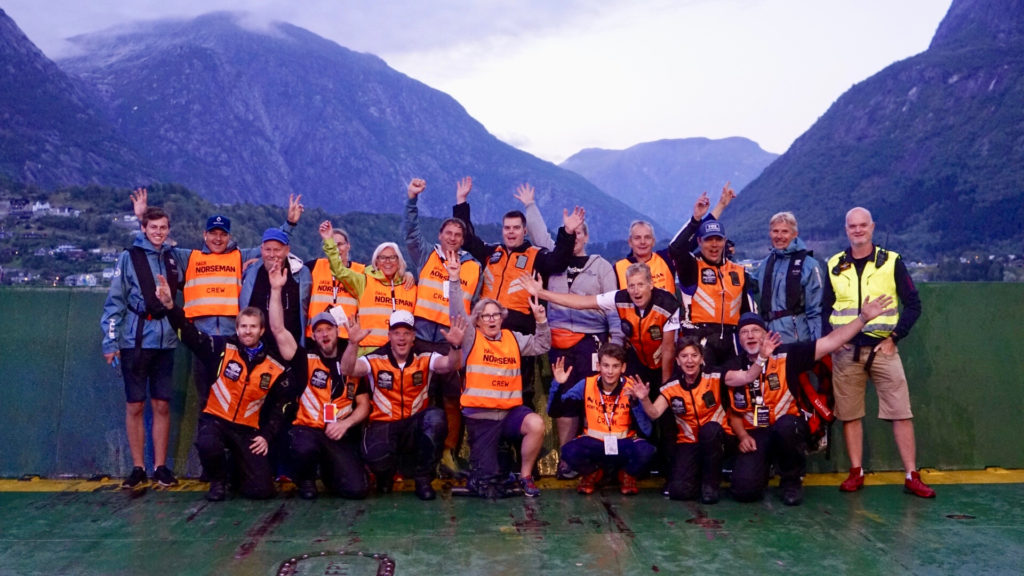
Now, the class of 2020 has been drawn. Their dream begins. All eyes are on August 1 next year, and that pre-dawn ferry where their destiny awaits, four meters down.
The draw done, I went back to unpacking the last of the boxes at the new premises, but I couldn’t shake the thought of those whose names were picked out. For some it will be the first time to take on the course, or indeed any course. For others it will be a return to savour, to maybe go one better than they did last time out.
Nor can I forget how disappointed the overwhelming majority who watched our broadcast will have been after waiting and waiting, only to hear their names go uncalled.
Sport is cruel like that. We don’t always get what we want, or to where we want to be, and sometimes it takes longer than expected, but the size of the race and the place ensure that not a single extra athlete can be squeezed in without risking the safety of all the others.
The limit has been reached, and there is no more to be said – now, for the athletes and the organisers and the TV crews and the marshals, it is all about the doing.
And that is what makes Norseman so special – from the very first race with only a handful of competitors to last year’s epic event featuring hundreds of athletes stretched out across miles and miles of beautiful countryside, it remains pure in a way that few other sports can manage.
Preserving that purity of spirit is the key to the continued success of the Norseman – it’s why the disappointment of not making it to the start is so great, and why the joy of making it to the finish is something that cannot be beaten in sport, anywhere in the world.

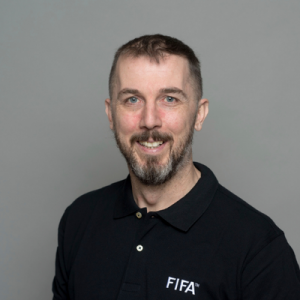 Philip O’Connor is a sports journalist, commentator and storyteller working with Spocks Family in Stockholm, Sweden. In 2019 the team broadcast the Norseman Xtreme Triathlon live for the third time. Philip has never raced Norseman but he has talked (non stop) his way through it three times.
Philip O’Connor is a sports journalist, commentator and storyteller working with Spocks Family in Stockholm, Sweden. In 2019 the team broadcast the Norseman Xtreme Triathlon live for the third time. Philip has never raced Norseman but he has talked (non stop) his way through it three times.
